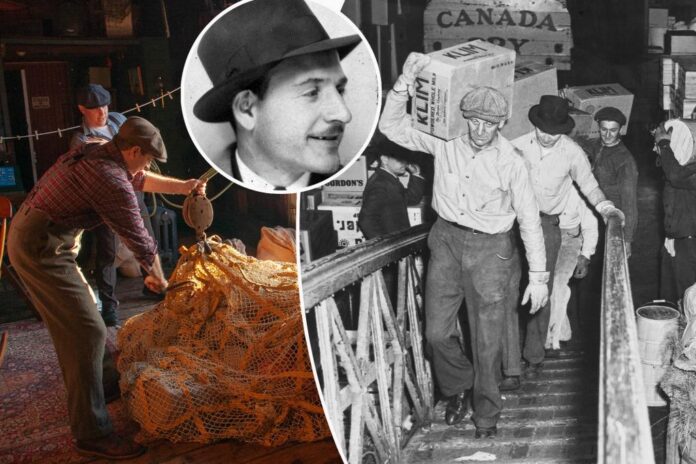It was July 14th, 1939, when Brooklyn longshoreman Pete Panto received a chilling message.
A man named Emil Camarda, who ran the borough’s crooked docks through its mafia-front union, told 28-year-old Panto — a charismatic Southern Italian immigrant who fought loudly against corruption on the waterfront — they needed to meet.
Panto was nervous enough, that before climbing into Camarda’s limousine near the Brooklyn Navy Yard, the outspoken worker warned his brother in law — if Panto had not returned home by the following day, to call the police.
And then, just like Al Pacino’s character “Lefty” at the end of “Donnie Brasco,” Panto left behind his wallet and embraced his fate.
He was never seen alive again.
The story of Panto — which became a rallying cry for the mistreatment of dock workers — later caught the eye of Brooklyn’s Arthur Miller, who around 1950 wrote a screenplay in tribute to the working class whistleblower, called “The Hook.”
Originally Miller, along with “On The Waterfront” director Elia Kazan, pitched the idea to Columbia Pictures big shot Harry Cohn — but the studio head wouldn’t greenlight it without major changes, according to historian and author Nathan Ward, who penned “Dark Harbor: The War for the New York Waterfront,” in 2010.
“[Cohn] said he wouldn’t make it unless they’ve turned the mobsters into communists,” Ward, a native Brooklynite, told The Post. “If it was an anti-communist movie about the waterfront, then he could make it. He said his union wouldn’t let him buy it the way it was written.”
Almost 75 years later, the unearthed project from Miller — who also wrote the play “A View From The Bridge” on Brooklyn waterfront corruption in 1955 — is finally being staged by the Brave New World theater company at Brooklyn’s Waterfront Museum, housed on a barge in Red Hook, through June 25.
Performances are already sold out.


“It’s our attempt to give Pete Panto his due — and to bring the play into the public eye,” director Claire Beckman told The Post.
Panto had spoken out against the overwhelming amount of corruption and mistreatment workers faced along the Brooklyn docks controlled by the International Longshoremen’s Association.
Bosses would throw worker checks up into the air, watching as the primarily desperate, immigrant crowd fought over their due pay.
That was just one of the humiliating rituals considered to be all in a day’s work at the time.


“They’d have to buy wine from a certain place, they had to get their hair cut in a certain place. The union would recommend all these things as as sort of a graft-y way to get hired,” Ward said, adding that, of course, the mob “all had a piece of those places.”
Originally, Panto earned the favor of his corrupt superiors, as he “could inspire loyalty in the men, especially as an Italian speaking guy.”
But that connection to his paisan and other impoverished longshoremen “got increasingly annoying” for the likes of ILA leader Joe Ryan, Emil Camarda, and the rest of their syndicate.
“He was speaking against the hiring practices all the shady ways that people could pay to get hired rather than legitimate system,” Ward said.


Eventually, the union bosses had enough with Panto’s rabble rousing, and one day he was invited into Camarda’s office to set the record straight.
“They said there were certain guys who didn’t like what he was doing,” Ward said, adding that Panto didn’t take the veiled threat seriously.
“[Panto] pretended to laugh it off…his friends said ‘you have to have bodyguards, you can’t go out by yourself. But Panto didn’t think [the mob] would follow through.”
After he got in the limousine that July day in 1939, Panto was taken to Lyndhurst, NJ, where he was strangled to death by notorious hitman Mendy Weiss and buried at a nearby farm.


His whereabouts remained a mystery for a year and a half, until another hitman Abe Reles, confessed to then-Brooklyn D.A. Thomas E. Dewey regarding the location of the late Panto, along with several other fallen enemies of organized crime.
They had all been killed through “Murder Incorporated” — a nickname given to the mob’s method of hiring hitmen in a discreet manner that could not be traced back to the client.
Now, “The Hook” looks to honor the unsung labor hero, according to its director, who, as a nod to Miller’s original work, framed the show to feel more like a film more than a Broadway play.
“The real story behind Pete Panto is who is calling for the murder of people [who] stick their neck out for the working class,” Beckman said. “For the little guy.”
Credit: Source link
















